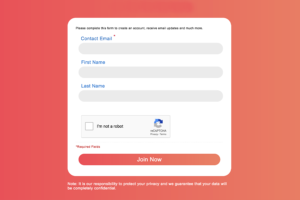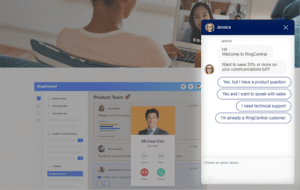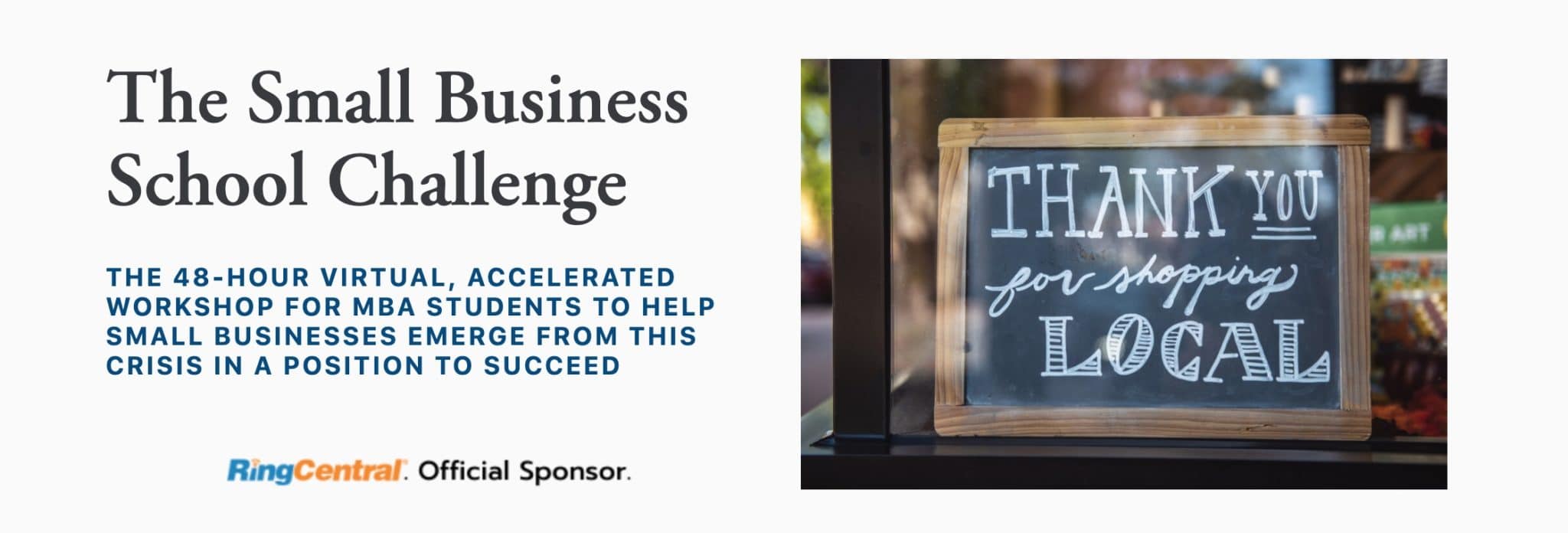Providing an exceptional customer experience equals higher revenue.
Period.
86% of buyers are willing to pay more for a great customer experience.1
With customer experience rising to the very top of B2B companies’ list of priorities2, small and medium businesses would be wise to shake up their agendas, as well.
Small and medium-sized businesses’ roadmap to success in 2020 begins with providing a first-rate, frictionless customer experience.
🔍 Access Metrigy’s free report to learn more about the 2022 state of customer experience technology.
What is a frictionless customer experience?
The “app era” has, in many ways, spoiled us. By no means is that a bad thing. When designed properly, apps present users with a swift, painless sign-up process.
Personal information is very often cached and will appear whenever you come to fill in your name and even credit card info (some may not be as enthusiastic about the latter part).
After ticking the necessary boxes, you’re in.
This process has been successfully replicated by leading apps in a variety of fields:
Banking, transportation (most notably with Uber) and medicare. Heck, companies like Lemonade are even revolutionizing the insurance business, a field notorious for offering less than stellar customer experiences.
A frictionless customer experience is one that provides a seamless, fluid and painless customer journey. From the minute a lead decides to make the leap and become a paying customer, he or she should be shielded from any factors that may cause them to reconsider.
How to achieve a frictionless customer experience
Luckily, most small and medium business’ support teams have far less strain on them than major B2B, or B2C enterprises. Often offering a technically complex software or product, B2B and SaaS companies at times designate specific customer success personnel to deal with a single account.
However, small businesses in 2020 are far more digitally-based than ever before3. It would be wise to adopt experts’ best practices and methodologies when attempting to come up with frictionless customer experience strategies.
Your first order of business is to conduct a thorough audit of your customers’ experience.
The sign-up process, company updates, and, of course, continued service efforts all need to be examined; separately, and within the context of the customer journey at large.
Let’s break it down:
Sign-up process
If you’re running a virtual store, getting this part right is absolutely critical. A whopping 70% of carts are abandoned on ecommerce sites4. With such low conversion rates, you have to do whatever you can to make it easier for people to successfully overcome this hurdle:
- The best defense is a good offense.
Try preemptively quelling any suspicions visitors might have by adding fun, simple messages on the sign up pages. Something like:“We promise this won’t hurt!”, or, “We know how annoying this process can be, so we made sure to make it as painless as possible!” - When possible, opt for a “forgiving” form.
Signing up for sites, such as Amazon, can sometimes be tedious. Shipping requires exact geographic information, so we’re usually willing to sit through the process of filling out the necessary details. However, your potential customers may not be as patient. Try to keep your sign-up or payment form as lean as possible, and, when the information is not absolutely critical, think of keeping certain information brackets optional.

Created by Yoni Yampolsky
Company updates/content sending
Customer service is tricky. It can be difficult to find the right balance between providing customers with relevant, useful information, and drowning them with content that will simply serve to overwhelm.
Working with marketing automation platforms can be a game changer in this regard.
Platforms such as ActiveCampaign, Keap and, of course, HubSpot (marketing automation platforms preferred by small businesses) sync up with your website. The way every individual site visitor interacts with your site is registered, and the data can be leveraged towards focused continued interaction. You can define that only those who exceeded a certain ‘interest threshold’ (e.g. ‘X visited the site 10 times in the last month’) will then be sent emails containing promotional content.
Alternatively, you can define that those who show clear interest in a particular item or niche, will continue to be fed content that exclusively pertains to said item category.
Although automated, this approach is likely to give customers the feeling that they are being treated with respect, and that you and your business really know them.
Continued customer service
Here’s where the heavy lifting takes place. Convincing your customers that sticking with you is preferable to looking elsewhere is a marathon. At the same time, a single friction-filled interaction between a company representative, be it an actual person or an AI-based tool, can be enough for a customer to start rethinking his or her relationship with you and your business.
Incorporating highly-sophisticated yet extremely user-friendly chat-bots has become common practice, even on small business websites.
No longer viewed as a nuisance or a ‘copout’ for providing actual, human service, chatbots will be engaged with, even enthusiastically, if they are set up and operated correctly.
With increasingly dynamic setups, you can craft messages that convey a human, friendly and caring tone, while adding your own personal touches.
RingCentral’s chatbot solution is tailored to small businesses, and is very easy to set up and operate.
Live chats are where things get a little tricky.
If you’re reading this, you don’t need us to explain how keeping a lean workforce is key to keeping costs lower. Operating a live chat typically entails designating specific personnel to attend to the task of being responsive to potential customers online.
Some small businesses will tell visitors that live chat assistance is available during working hours and during specific time zones. Others decide to outsource the manning of said live chat duties. The latter approach can sometimes come with a price. Outsourced talent may have a difficult time understanding in-depth inquiries, and may lead to further customer agitation.
Video’s role in achieving frictionless customer experiences
Video’s role within customer service has been on the rise for a while now.
COVID-19 has forced those industries and companies normally averse to such trends to jump aboard, quickly.
Video’s true power lies in its ability to be incorporated throughout every step of the customer journey. Additionally, it can be weaved into the aforementioned methods deployed by small businesses looking to provide a frictionless customer experience.
Sign-up process
Video has become a staple of modern websites, and with good reason. Including a video on your landing page can boost your conversion rate by up to 80%5.
Site visitors are more likely to engage with a video than to pay attention to your landing page’s copy, even if it’s snappy and to-the-point6.
Here’s where things get interesting. Using video hosting solutions, such as Cincopa, your landing page video’s luring power can be leveraged towards creating a far more frictionless sign-up process.
You can arrange for the sign-up form to appear on the video player, having it pop-up at a point at which it is clear the viewer has shown sufficient interest in you and your product or service (e.g. the 30 second mark of a video with a runtime of a minute and a half).
If you want to get fancy, you can arrange for the video player to pop out and cover the entire screen. Then, arrange for the pop up form to appear at the bottom right or left corner of the player. Viewers will be able to keep watching the video as they fill in their personal information.
Even if they’re too preoccupied with your video (which, in a way, is a major sign of success on your part), the emergence of the form and the need to submit information to it will lead customers to regard it as far less of a nuisance. Having established tangible interest in your offering, completing the sign-up form will be viewed as a natural next step on their eventual customer journey. Much of the suspicion and hesitation typical to this critical stage of the buyer’s journey will have been nipped in the bud.
Company updates/content sending
Video and email is a match made in customer service heaven. Your customers are far more likely to respond and engage with email notifications if you incorporate video into them:
Open rates spike by 300%, and, more importantly, click through rates improve by 65%7.
Heck, even including the word video in your email title will see your customers opening them at far higher rates8.
Higher engagement with your emails means that your customers are going to be maintaining a continuous relationship with you. They will be kept abreast of anything that might help them get more out of your offering, and alleviate feelings of neglect.
Embedding a video in an email just sounds scary. Basically, it’s fancy talk for copying your video’s embed code (whether it be a YouTube video or one hosted on a video hosting platform) and pasting it within your email platform.
Once your customer clicks on the video thumbnail, he or she will be directed to a separate landing page (YouTube, or a landing page you built using your video hosting platform).
This might sound costly, but there’s no reason it should be. There are plenty of webcam Chrome extensions that you can use to record yourself with. Think of creating a one minute walk-through of all your updates and notifications. You can add links at the bottom of your YouTube page and, if you’re using a video hosting platform, you can add calls-to-action on the video player itself.
The beauty of the latter approach is that a customer can click on a CTA right when his or her interest is piqued, and then return to the video right where he or she left off.
Continued customer service
Sure, chatbots have come a long way in recent years. But, even the most sophisticated, personalized solution may see a customer forced to engage in a lengthy, text-based back-and forth. Furthermore, the more complex the problem he or she is facing, the more likely your customer is to be presented with potential solutions that do not sufficiently solve the problem.
Empowering your customers to explain themselves and their problems via short, to-the-point videos can prove game-changing.
Remember the aforementioned Lemonade? The insurance app has made waves in large part due to its experimentation with asynchronous video. Customers are asked to record themselves, and to provide short, concise explanations as to what happened to them and why they need to be compensated.
Once customers are done recording themselves using their smartphone camera, the video is automatically submitted into the chatbot. Sophisticated AI quickly analyzes the video, and offers additional help accordingly.
Check it out:
This method saves customers time and eliminates additional stages of questioning on your end. The shorter the interaction, the less likely it is to include or lead to feelings of friction on the customers’ end.
Even if you don’t opt for such sophisticated bot solutions, you’d be wise to enable and encourage customers to leave complaints via asynchronous video. Unless they lack the necessary linguistic skills you and your team communicate with, customers will be able to elaborate on their problem more thoroughly. Most importantly, they can visually demonstrate what’s wrong with the item they bought from your store, by turning the camera towards it, and covering it from a variety of angles.
Answering customers via short, bite-sized videos can prove revolutionary, as well.
Besides being able to address a problem in a more easy-to-consume fashion, this approach will go a long way towards humanizing yourself and your business in the eyes of your customers.
The latter will come away knowing that you really listened to their problem and didn’t try to avoid them by offering generic or automated solutions.
Final thoughts and takeaways
Salesforce’s recent State of Marketing report highlights the growing trend amongst modern consumption9:
84% of customers now believe the experience a company provides is just as important as its product and services.
Providing a frictionless customer experience is no longer an option; anything less, and your customers will be reconsidering their commitment to you and your products.
Video can be leveraged in unique and inventive ways throughout the customer journey. Complementing existing methods, video-based solutions will help you cut out needless steps when corresponding with customers and help the latter iterate their problem more clearly and thoroughly.
Ingratiating yourself to your customers by recording yourself via video when responding to complaints will go a long way towards retaining customers and cultivating consumer loyalty.
1, 2 superoffice.com/blog/customer-experience-statistics
3 forbes.com/sites/forbestechcouncil/2020/03/17/why-digital-transformation-is-a-necessity-for-all-smbs/#4f5533db3680
4 plytix.com/blog/shopping-cart-abandonment-statistics-and-tactics
5, 6 unbounce.com/landing-page-articles/the-benefits-of-using-video-on-landing-pages
7 campaignmonitor.com/blog/email-marketing/2020/02/surprising-video-email-marketing-statistics
8 popvideo.com/blog/5-tips-for-improving-emails-with-video
9 salesforce.com/research/customer-expectations
Originally published May 21, 2020, updated Dec 30, 2022








